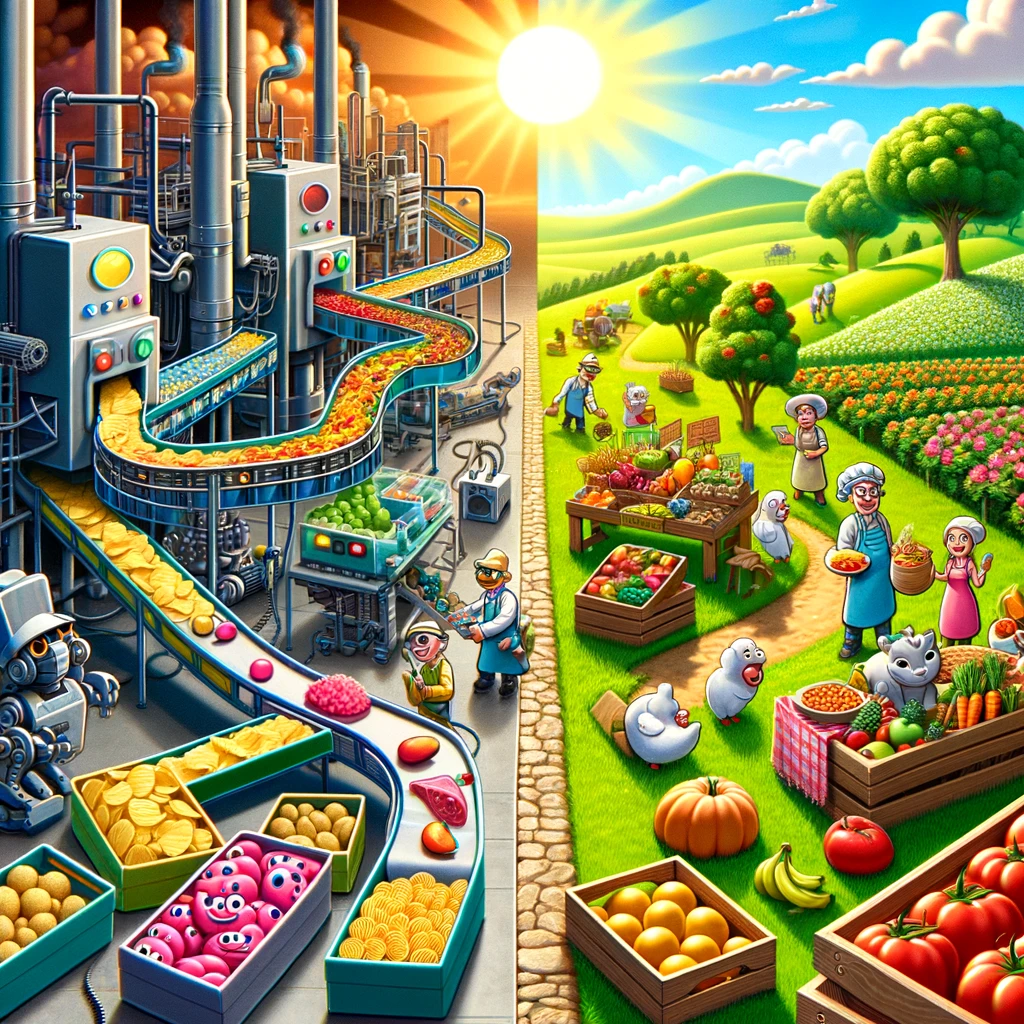I’ve been exploring the unexpected ways different industries impact our lives, and one of the most surprising connections is how the cigarette industry infiltrated the American food industry. It makes sense; big tobacco and processed food companies are both in the addiction industries. However, I wasn’t able to connect the two until recently.
This history helps explain much about the current obesity epidemic, especially among children. Let me take you through how Big Tobacco’s strategies ended up shaping our food supply, the role of the FDA and lobbying, and why the latest obesity drugs are just a temporary fix.
The Unexpected Marriage of Tobacco and Food
The cigarette industry was booming in the mid-20th century. Tobacco companies were making tremendous profits, but as awareness of the health risks of smoking grew, they faced increasing scrutiny. They needed a new venture to keep their money up, so they turned to the food industry.
Philip Morris, a giant in the tobacco world, bought General Foods in 1985 and Kraft in 1988. Suddenly, brands like Kraft Cheese, Oscar Mayer, and Jell-O were under the same corporate umbrella as Marlboro cigarettes. R.J. Reynolds followed suit, merging with Nabisco in 1985 and gaining control over popular snacks. These moves weren’t just about diversification—they were a strategic play to secure profits as smoking became less socially acceptable.
The Science of Addiction: From Nicotine to Sugar

One of the most eye-opening aspects of this story is how tobacco companies applied their expertise in addiction to the food industry. They had spent decades perfecting the art of making cigarettes addictive. They took this knowledge and used it to create highly addictive food products by hitting the “bliss point“—the perfect combination of sugar, fat, and salt that keeps people craving more.
It’s no accident that many processed foods are nearly impossible to resist. Just like nicotine hooks smokers, these engineered foods hook eaters. And guess who these irresistible snacks were often marketed to? Kids.
Targeting Children: A Page from Big Tobacco’s Playbook

Big Tobacco had long targeted young people with their marketing, knowing that hooking customers early would secure a lifetime of sales. They used similar tactics in the food industry, creating kid-friendly mascots and colorful packaging to attract young consumers. Think of Tony the Tiger or the Kool-Aid Man—these characters were designed to appeal directly to children, making sugary cereals and drinks a staple in many households.
The Financial Impact: Profits vs. Healthcare Costs

The financial gains from these ventures were enormous. Philip Morris, for example, saw substantial profits from their food acquisitions. The combined revenues from their food and tobacco operations turned them into one of the largest corporations in the world. These companies generated billions of dollars annually from their addictive products, both cigarettes and processed foods.
However, the societal costs have been staggering. The healthcare costs associated with treating obesity-related conditions, such as diabetes, heart disease, and certain cancers, are astronomical. In the United States alone, the annual medical cost of obesity was nearly $283 billion in 2023. For every dollar these companies made, society paid a much higher price in healthcare costs and lost productivity.
The Role of the FDA and Lobbying
The Food and Drug Administration (FDA) has had a complex role in this saga. While the FDA is supposed to regulate food and drugs to ensure public safety, its actions are influenced by powerful lobbying from the food industry. These companies have invested heavily in lobbying efforts to shape regulations in their favor. This has led to lenient regulations on unhealthy ingredients and inadequate labeling standards that keep consumers in the dark about what they eat.
Lobbying efforts have also stymied efforts to limit junk food advertising, particularly to children. The food industry’s powerful lobbying machine has consistently fought against measures that might hurt their bottom line, delaying crucial public health initiatives.
The Rise of Synthetic Foods vs. Natural Foods

Another troubling trend is the promotion of synthetic foods over natural ones. Processed and synthetic foods, often high in sugar, fat, and artificial ingredients, have become staples in the American diet. These foods are cheaper to produce and have longer shelf lives, making them highly profitable for food companies.
Meanwhile, natural foods—fresh fruits, vegetables, and whole grains—are often more expensive and less accessible, particularly in low-income areas. This has led to the proliferation of food deserts and urban and rural areas where residents have limited access to affordable and nutritious food. Fast food chains thrive in these areas, providing calorie-dense but nutrient-poor options contributing to poor health outcomes.
The Reality of Food Deserts
One of the most distressing consequences of the food industry’s shift towards processed and synthetic foods is the proliferation of food deserts. Food deserts are areas, often in low-income urban and rural locations, where residents have limited or no access to affordable and nutritious food. These areas lack grocery stores, farmers’ markets, and other healthy food providers, leaving residents with few options other than convenience stores and fast-food restaurants that primarily offer processed and unhealthy foods.
Living in a food desert can have severe implications for health and nutrition. Without access to fresh fruits, vegetables, and whole grains, residents are more likely to rely on calorie-dense, nutrient-poor foods that contribute to obesity, diabetes, and other chronic health conditions. The environmental and economic factors that create food deserts perpetuate a cycle of poor health and limited opportunities for improvement. Efforts to address food deserts must focus on increasing access to healthy foods through community gardens, mobile markets, and policies that incentivize grocery stores to open in underserved areas.
The Prevalence of Fast Food and Rising Food Costs

Fast food is another significant player in the obesity epidemic. Fast food restaurants are ubiquitous, offering convenient, cheap, and highly palatable meals. However, these meals often contain calories, unhealthy fats, sugars, and sodium. Fast food’s convenience and low cost make it an attractive option for many, but the long-term health consequences are dire.
Adding to the problem is the rising cost of food due to inflation. As the prices of fresh, healthy meals continue to rise, more people are turning to cheaper, processed alternatives. This only exacerbates the obesity problem, as these processed foods are typically less nutritious and more calorie-dense.
A Temporary Fix: Obesity Drugs like Ozempic
In recent years, drugs like Ozempic have emerged as potential solutions for obesity. Ozempic, originally developed for diabetes management, has shown promise in helping people lose weight. While these drugs can be effective, they are essentially a band-aid on a much deeper issue. They treat the symptoms of obesity but do not address the root causes—namely, the highly addictive nature of processed foods and the aggressive marketing tactics that promote them.
Relying on drugs like Ozempic is akin to treating lung cancer with chemotherapy without addressing the smoking that caused it in the first place. These medications can help manage the condition but not prevent it. Like Big Tobacco, the food industry has created a problem that society is scrambling to manage medically.
Learning from the Past: Steps Toward a Healthier Future
Understanding this history is crucial for creating a healthier future. Here are some steps we can take:
- Stronger Regulations: Implement and enforce regulations that limit the marketing of unhealthy foods, especially to children, and require clear, honest labeling of nutritional content.
- Promoting Whole Foods: Encourage a shift back to whole, unprocessed foods through education and subsidies for healthy food options.
- Public Awareness: Increase public awareness about the manipulative tactics used by the food industry to create demand for unhealthy products.
- Policy Advocacy: Support policies prioritizing public health over corporate profits, ensuring food regulations protect consumers.
Conclusion
The cigarette industry’s foray into the American food landscape is a sobering reminder of how corporate interests can shape public health. By learning from this history, we can work towards a food system prioritizing health and well-being. It’s a call to action to remain vigilant and advocate for healthier food practices to protect future generations.
By exploring the intertwined histories of the cigarette and food industries, we uncover important lessons about the influence of corporate power on our health. Staying informed and advocating for change can help us advocate for a healthier, more transparent food system.
Author’s Note
I wrote part of this article by myself and the other with the help of a personally customized ChatGPT bot. I did this because I’m training myself on how to use artificial intelligence tools to make my content creation development faster.
If you want to learn more ways to regain your health, check out my article on doomscrolling.
All the best,
Ariel


